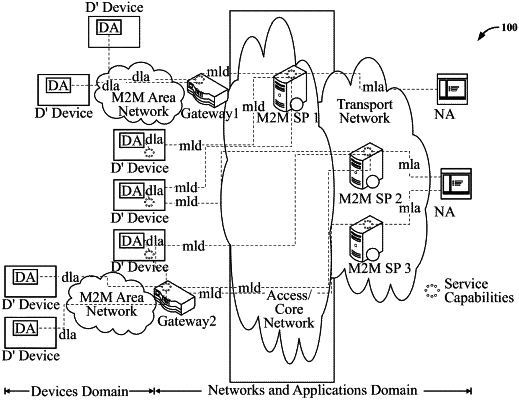| CPC H04L 67/10 (2013.01) [H04L 67/306 (2013.01); H04L 67/51 (2022.05); H04L 67/5682 (2022.05); H04W 4/70 (2018.02)] | 11 Claims |

|
1. A method for a service layer supporting service capabilities through a set of Application Programming Interfaces (APIs), the service layer being a middleware layer supporting the service capabilities for a plurality of applications on top of underlying network protocols, the method comprising:
receiving, via a network, indications for data which is from more than one applications, wherein the indications for data is associated with filtering criteria for filtering series of data from the more than one applications connected to the service layer and one or more time periods for data, wherein the data is stored in one or more resources of a device associated with resource uniform resource identifiers (URIs) in the service layer, wherein the one or more resources are identified by the resource URIs and the one or more resources are uniquely addressable elements in a Resource Oriented Architecture (ROA);
determining, using the one or more time periods specified in the indications for data, when to filter data from the one or more resources;
filtering data to generate filtered data based on the filtering criteria;
determining, using the indications for data, a second service layer implemented in a second server in the network at which to store the filtered data associated with the one or more resources identified by the resource URIs, wherein the second service layer supports the service capabilities through a set of APIs of the second service layer; and
sending one or more requests to the APIs of the second service layer to store the filtered data.
|